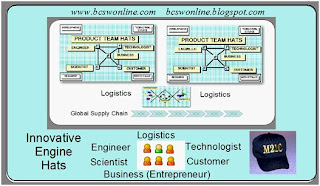 Peggy Low WS Chamber; John Merrill, Exec. Director Gateway University Research Park; Doug Edgeton, President of the Piedmont Triad Research Park and VP, WFUHS; Russ Read, Executive Director of the National Center for Biotechnology Workforce Training; Gwyn Riddick, Regional Director, North Carolina Biotechnology Center; Rob Clapper, President Greensboro Chamber of Commerce; Leroy Stokes, VP, Guilford Technical Community College; Davis Montgomery, Manager, Business Relations, Duke Energy signed a Memorandum of Support (MOS) July 27, 2009.
Peggy Low WS Chamber; John Merrill, Exec. Director Gateway University Research Park; Doug Edgeton, President of the Piedmont Triad Research Park and VP, WFUHS; Russ Read, Executive Director of the National Center for Biotechnology Workforce Training; Gwyn Riddick, Regional Director, North Carolina Biotechnology Center; Rob Clapper, President Greensboro Chamber of Commerce; Leroy Stokes, VP, Guilford Technical Community College; Davis Montgomery, Manager, Business Relations, Duke Energy signed a Memorandum of Support (MOS) July 27, 2009.

Instead of building a physical facility, the partners will use existing space within their own facilities to house international companies as they enter the market. The Greensboro Chamber will be managing partner for the Center.
The Center will ultimately provide assistance with business organization, intellectual property protection, regulatory counseling, market channel development, and connections to capital for international bioscience companies seeking to enter the Piedmont Triad. The center will be a turn-key location for doing business when visiting the region and will be a central point of contact to establish connections between companies and governments, research universities and parks, business incubators, and licensing venues.
This blog gives me an opportunity to discuss some additional facets of Metaphors for the 21st Century (M21C) introduced in previous blogs. In the March 29, 2008 blog, Innovation …. Customer I introduced the ISCORPIO Metaphor; at that time emphasis was on the Innovation and Customer Facets of the Metaphor.
Thinking about the Piedmont Triad International Bioscience Business Center (PTIBBC) in light of the ISCORPIO concept I would like to focus on the "Organization", "Resources" and "Outer CORE" petals. The concept of a virtual organization without "Brick and Mortar" resources is innovative and best utilizes the resources from various partners. I would say that this is an excellent example of "Thinking outside the Box". It will allow the clients that are exploring the Piedmont Triad Area to get first hand feels of the variety of resources available to them. One that I mention is the North Carolina "Wet Lab" Facilities. It is my understanding that the web lab located at the Piedmont Research Park has now graduated their first class.
The "Outer CORE" petal addresses the Common Operational Resource Environment (CORE). This relates to the environment within which a Business operates and includes government, education, economic development groups, language, financial, culture, communication and transportation infrastructure. The FedEx International Hub that is opening soon is a prime example of the Transportation Infrastructure.
North Carolina is doing good things by beefing up the Outer CORE with the NC Research Network discussed in NC Research Parks .... New Backbone blog and such things as the Piedmont Triad International Bioscience Business Center discussed in this blog and NC Biotechnology Network.





